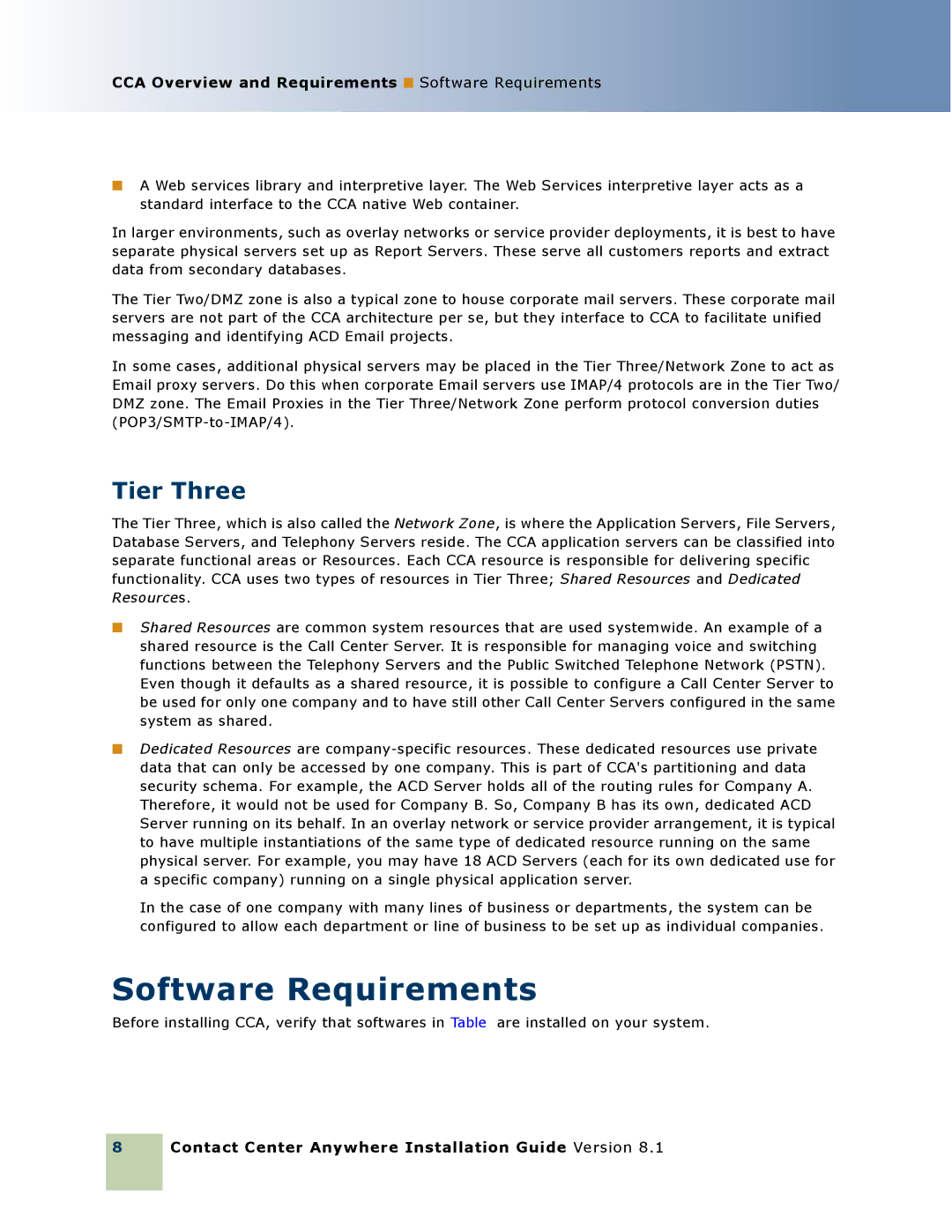
CCA Overview and Requirements ■ Software Requirements
■A Web services library and interpretive layer. The Web Services interpretive layer acts as a standard interface to the CCA native Web container.
In larger environments, such as overlay networks or service provider deployments, it is best to have separate physical servers set up as Report Servers. These serve all customers reports and extract data from secondary databases.
The Tier Two/DMZ zone is also a typical zone to house corporate mail servers. These corporate mail servers are not part of the CCA architecture per se, but they interface to CCA to facilitate unified messaging and identifying ACD Email projects.
In some cases, additional physical servers may be placed in the Tier Three/Network Zone to act as Email proxy servers. Do this when corporate Email servers use IMAP/4 protocols are in the Tier Two/ DMZ zone. The Email Proxies in the Tier Three/Network Zone perform protocol conversion duties
Tier Three
The Tier Three, which is also called the Network Zone, is where the Application Servers, File Servers, Database Servers, and Telephony Servers reside. The CCA application servers can be classified into separate functional areas or Resources. Each CCA resource is responsible for delivering specific functionality. CCA uses two types of resources in Tier Three; Shared Resources and Dedicated Resources.
■Shared Resources are common system resources that are used systemwide. An example of a shared resource is the Call Center Server. It is responsible for managing voice and switching functions between the Telephony Servers and the Public Switched Telephone Network (PSTN). Even though it defaults as a shared resource, it is possible to configure a Call Center Server to be used for only one company and to have still other Call Center Servers configured in the same system as shared.
■Dedicated Resources are
In the case of one company with many lines of business or departments, the system can be configured to allow each department or line of business to be set up as individual companies.
Software Requirements
Before installing CCA, verify that softwares in Table are installed on your system.
8
Contact Center Anywhere Installation Guide Version 8.1
